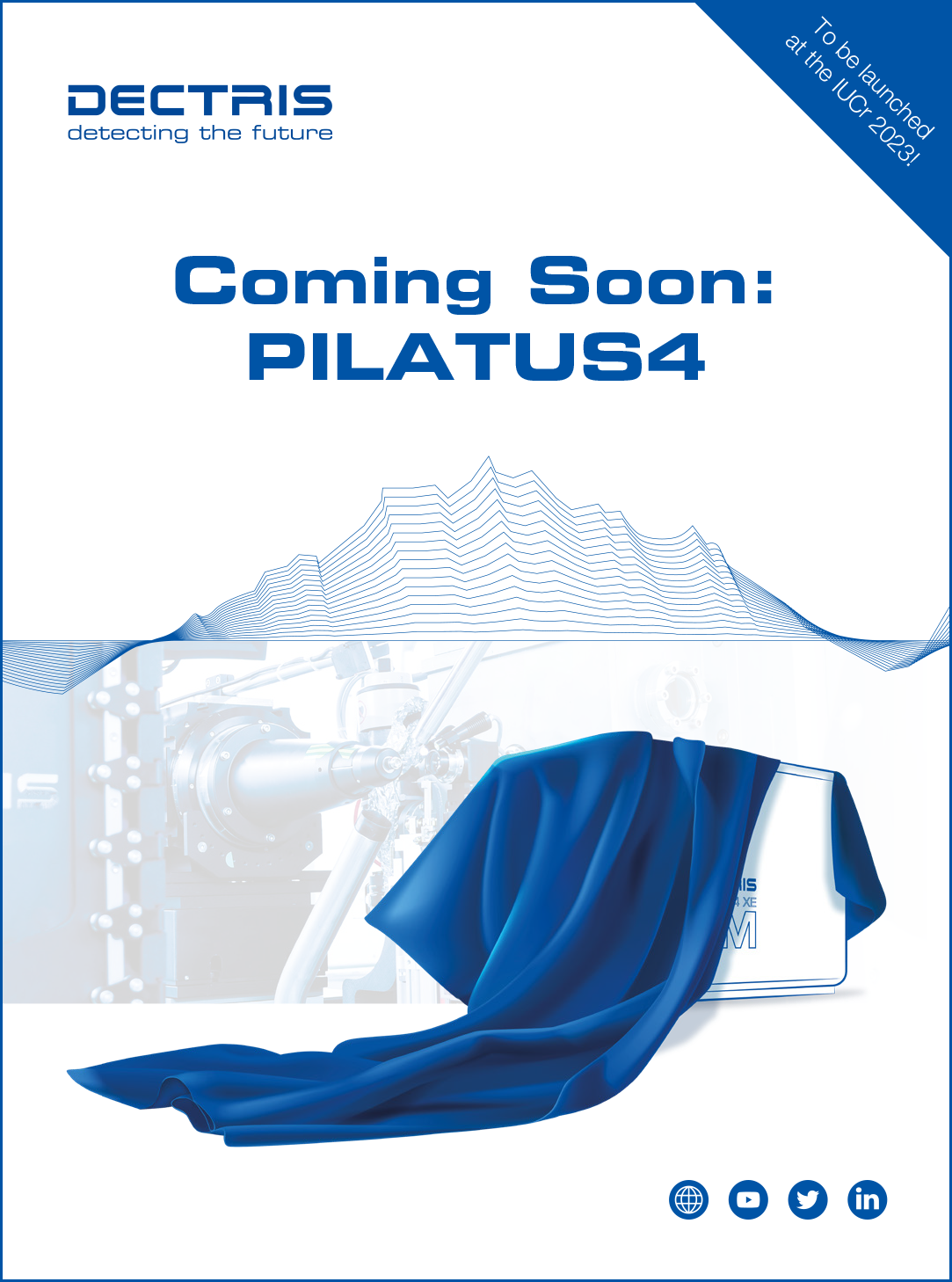


Meeting report (IUCr supported)
The Third Pan-African Conference on Crystallography
![thumbnail [thumbnail]](https://www.iucr.org/__data/assets/image/0005/156056/thumbnail.jpg)
The Third Pan-African Conference on Crystallography, PCCr3, was held in Nairobi, Kenya, from 15 to 21 January 2023, under the auspices of the African Crystallographic Association (AfCA). The conference, which took place at Bomas of Kenya, was organised under the theme Harnessing Crystallography for Africa’s Research and Technology Transformation. A total of 70 delegates from four continents (Africa, Europe, South America and North America) participated in this year’s PCCr. The conference was made possible with sponsorship from the IUCr, NRF Kenya, Cambridge Crystallographic Data Centre (CCDC), ICDD, Bruker, Rigaku, Oxford Cryosystems, Dectris, Crystal Growth & Design, CrystEngComm, the RSC Pan Africa Chemistry Network, NACOSTI, ESTEC, Kenya Nuclear Regulation Authority, Mandini Kenya, ESTEC, MRS Kenya and Multimedia University.
The purpose of the conference was to stimulate economic growth in Africa by building synergy between funding agencies, industry and academia through the exploitation of crystallography to enhance research and innovation. The conference provided a platform for African crystallographers to exchange ideas and collaborate around the use of crystallography in advancing science on the African continent.
![[Fig1]](https://www.iucr.org/__data/assets/image/0006/156057/Fig1.jpg)
Scientific sessions
The conference included the following sub-themes:
-
Inorganic and Industrial Materials
-
Crystal Engineering and Structural Chemistry
-
Crystallography and Life Sciences
-
Diffraction Physics and Phase Transformations
-
Crystallographic Databases
-
Application of Crystallography in Materials Science, Agricultural Science and Geological Science.
There were several excellent plenary lectures covering a wide range of topics. These were delivered by Emmanuel Nji, Len Barbour, Michele Zema, Sylvain Ravy and Elspeth Garman. A variety of invited lectures were also presented, by a truly global group of speakers: Eunice Nyawade, Kenya; Seham Kamal, Egypt; Patrice Kenfack Tsobnang, Cameroon; Gift Mehlana, Zimbabwe; Beatriz Guimaraes, Brazil; Prisca Kouakou, Côte d’Ivoire; Andy Maloney, UK; El-Eulmi Bendeif, France; Abou Akoun, Côte d’Ivoire; and Dietmar Stalke, Germany.
The conference kicked off with an opening ceremony that was addressed by the Vice Chancellor of Multimedia University, Professor Festus Kaberia, who hosted the meeting. The Vice Chancellor stressed the importance of promoting crystallography in Africa through the provision of basic and research equipment for both industry and academia. Also in attendance were the secretary of the European Crystallographic Association, Andy Maloney, and the CEO of the IUCr, Alex Stanley, who also gave unwavering assurance towards supporting AfCA to achieve its mandate on the African continent and beyond. The president of AfCA, Delia Haynes, presented a brief history of AfCA and its roles in promoting the advancement of crystallography in Africa.
![[Fig2]](https://www.iucr.org/__data/assets/image/0007/156058/Fig2.jpg)
The first plenary lecture was given by Dr Emmanuel Nji, who presented approaches that can be used to win the fight against infectious diseases. He stressed the importance of building facilities across the continent that can tackle research related to infectious diseases. Andrew Maloney discussed how the knowledge contained in the Cambridge Structural Database (CSD) can be used in a research setting, with a particular focus on the pharmaceutical industry. Furthermore, he explained how tools that are built upon structural data can help to understand everything from the likely conformation of a new molecule to the properties that underpin drug manufacturing. The second day of the conference started with a plenary lecture from Len Barbour who delivered an excellent talk on Dynamic Processes in Crystals. His work demonstrated that it is possible to lose water in porous materials at very low temperatures. This observation makes it possible to design new materials for water harvesting and release. In a related presentation, Patrice Kenfack Tsobnang highlighted the structural dynamics associated with water uptake and release in cobalt and copper coordination complexes.
Just like previous PCCr conferences, presentations on metal–organic frameworks (MOFs) and their applications were a common feature. Maureen Gumbo and Gift Mehlana spoke about MOFs as support materials for chemical and biological catalysts. The presentations highlighted how MOFs can be used in the utilisation of carbon dioxide to produce high-value chemicals. Rufaro Kawondera also showed how chirality can be introduced in already-established MOFs for water-splitting purposes to produce hydrogen, and Mihails Arhangelskis showed how computational calculations can be used to make new MOFs. Other related presentations included Coordination and Interactions of Transition Metal Werner Complexes by Merrill Wicht and Structural Characterization of Coordination Complexes for Catalysis by Eunice Nyawade. Alessia Bacchi showed how MOFs can be used to transform liquid ingredients into crystalline materials. This work is useful in the food industry, where such ingredients can be used to preserve food.
Elspeth Garman gave an inspiring plenary lecture about her experience and adventures in crystallography. Her work explored physics-based thinking to help establish improved methods for macromolecular crystallography, enabling problems that were not previously accessible to be tackled. A notable example is the development of protocols to cryo-cool protein crystals prior to diffraction data collection at 100 K, reducing the rate of radiation damage by around a factor of 70 compared with holding the crystal at room temperature. Garman also highlighted that even at 100 K radiation damage can still occur, which may impede correct structural determination. However, she has developed software to correct for the damages that are caused by radiation. Other plenary lectures were from Michele Zema, the IUCr Executive Outreach Officer, who talked about the efforts towards building an African Light Source, as well as the XTechLab project in Benin, and from Sylvain Ravy who discussed how synchrotron radiation can shed light on materials.
Workshops
Tom Blanton, the Director of ICDD, facilitated a workshop on powder diffraction data. The focus of this workshop was to introduce early career researchers, students and those in the industry to using different software (such as TOPAS and Eva) to analyse diffraction data. An introduction to the PDF4 file was also covered. Another highly successful workshop was organized by the CCDC, which focused on how to use the CSD. This workshop was mainly attended by young scientists and early career researchers.
![[Fig3]](https://www.iucr.org/__data/assets/image/0008/156059/Fig3.jpg)
![[Fig4]](https://www.iucr.org/__data/assets/image/0018/156060/Fig4.jpg)
![[Fig5]](https://www.iucr.org/__data/assets/image/0019/156061/Fig5.jpg)
Poster session
PCCr3 also had an outdoor poster session. Thanks to generous sponsorship from CrystEngComm, Dalton Transactions and the IUCr, three poster prizes were awarded to Christelle Ivane Azambou from the University of Dschang, Cameroon; Frederick Okumu from the Jaramogi Oginga Odinga University of Science and Technology, Kenya; and Lavanya Kumar from the University of Warsaw, Poland.
The second Council meeting of AfCA also took place during PCCr3, in hybrid mode. On the final day of the conference, delegates were able to visit Nairobi National Park, the only national park inside a city.PCCr3 was a great opportunity for crystallographers from around the world to interact in a lovely setting. After the isolation of the pandemic, being able to meet friends and colleagues face-to-face was wonderful. The conference showcased the excellent crystallographic research on the African continent, as well as the growth of the African crystallography community. We are already looking forward to PCCr4!
![[Fig6]](https://www.iucr.org/__data/assets/image/0020/156062/Fig6.jpg)
Copyright © - All Rights Reserved - International Union of Crystallography







